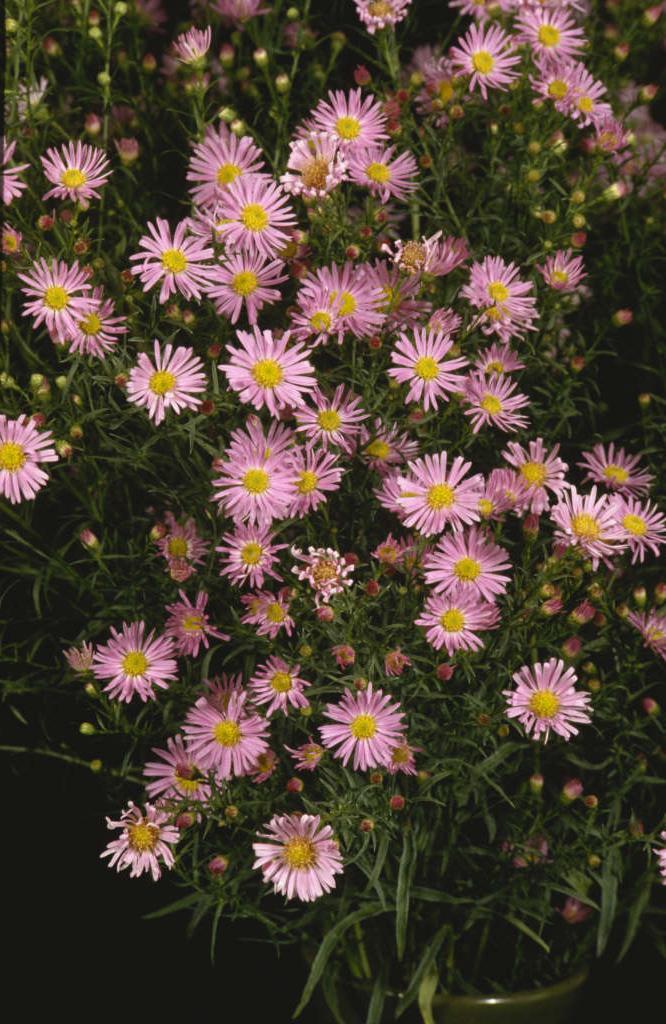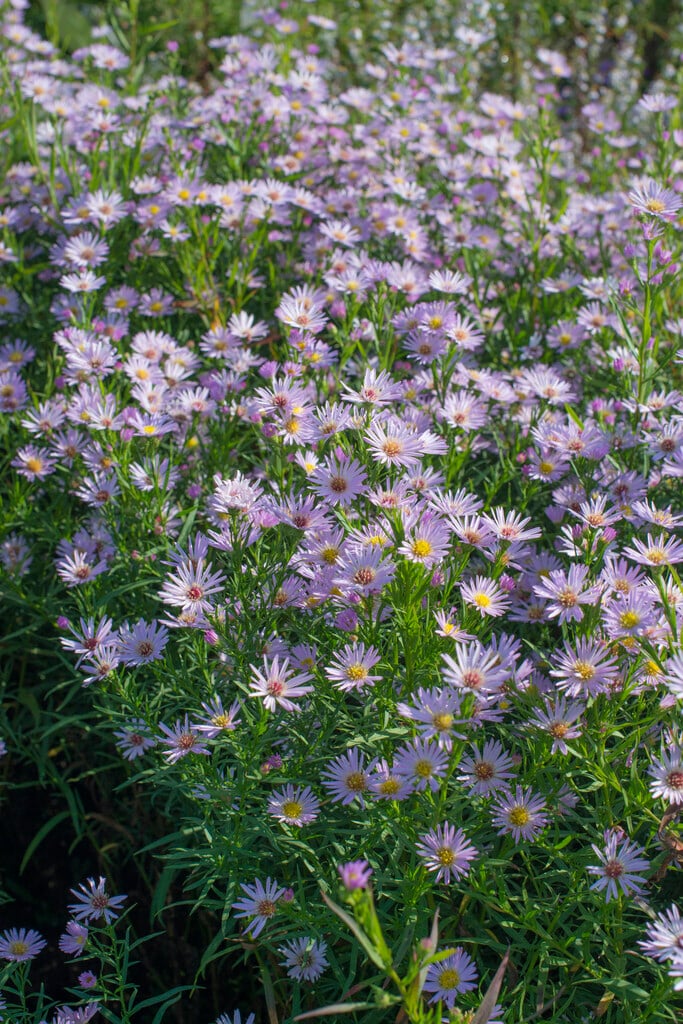Symphyotrichum 'Ochtendgloren' (_pilosum_ var _pringlei_ hybrid)

aster 'Ochtendgloren'
A perennial producing strong clumps of foliage to 1.2m in height, with long, narrow dark green leaves and large branched heads of small, starry pink flowers prolifically produced along the stems in autumn
Size
Ultimate height
1–1.5 metresTime to ultimate height
2–5 yearsUltimate spread
0.1–0.5 metresGrowing conditions
Moisture
Well–drainedpH
Acid, Alkaline, NeutralColour & scent
| Stem | Flower | Foliage | Fruit | |
| Spring | Green | |||
|---|---|---|---|---|
| Summer | Pink | Green | ||
| Autumn | Pink | Green | ||
| Winter |
Position
- Full sun
- Partial shade
Aspect
South–facing or West–facing or East–facing
Exposure
Exposed or Sheltered Hardiness
H4Botanical details
- Family
- Asteraceae
- Native to GB / Ireland
- No
- Foliage
- Deciduous
- Habit
- Clump forming
- Genus
Symphyotrichum includes around 90 species of annuals, biennials and perennials, mostly spread through the Americas, that were formerly included within the genus Aster. Leaves are simple, lance-shaped and entire, but it is their daisy-like flowerheads that they are grown for; central disc florets are typically yellow, surrounded by strap-shaped ray florets in shades of pink, blue, purple or white
- Name status
Accepted
How to grow
Cultivation
Grow in well-cultivated, fertile, moist soil in sun or partial shade; may need staking
Propagation
Propagate by division in spring
Suggested planting locations and garden types
- Cottage and informal garden
- Coastal
- Gravel garden
- Prairie planting
- Wildlife gardens
- Flower borders and beds
- Cut flowers
Pruning
Cut back after flowering
Pests
May be susceptible to slugs, snails, leaf and bud eelworms and aphids
Diseases
May be subject to wilts, leaf spot and grey moulds
Get involved
The Royal Horticultural Society is the UK’s leading gardening charity. We aim to enrich everyone’s life through plants, and make the UK a greener and more beautiful place.

